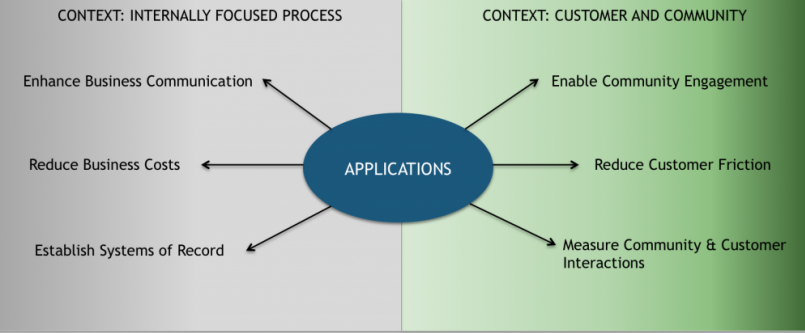 NEWS
NEWS
 NEWS
NEWS
 NEWS
NEWS
If you’re thinking of cloud computing solely as a money-saving alternative to captive infrastructure then you’re missing the whole point, asserts Wikibon cloud analyst Brian Gracely in his latest report, Moving to The Cloud: Key Impacts to Consider (available on Wikibon Premium).
The competitive landscape in all industries has changed, and companies must up their agility and innovation game in order to survive. However, the IT mindset at many organizations is still defined by the priorities that drove initiatives like client/server computing and enterprise resource planning in the 1980s and 1990s. The goal then was to improve efficiency or reduce costs. Cloud can help in that respect, Gracely asserts, but businesses will derive greater value by focusing on a new dimension of cloud benefits: creating new business opportunities.
To do that, Gracely proposes a two-part grid for evaluating options. Internally focused processes should be considered in the context of how the cloud can reduce costs or improve flexibility by, for example, improving scalability or expanding user access. This is what IT is traditionally done, but it’s not where the action will be in the future.
That will come in the context of what Gracely dubs “customer and community.” These applications enable community engagement, reduce customer friction or better measure community and customer interactions. Such capabilities can differentiate the business and open new opportunities.
Taking advantage of those opportunities means abstracting applications to better incorporate technology and competitive changes. Gracely cites the example of Target Corp., which could not have planned for the impact that applications like Pinterest or Instagram would have on its business. “Prior to integrating those applications into their Target.com web experience, they needed to begin putting together an API framework to allow them to plan for new or unexpected ways to engage with their customers,” he writes. Scrapbooking was a game changer in some parts of the retail industry, and those companies that adapted their Web presences most quickly prospered.
The most critical near-term challenge for IT is to understand how to quickly build capabilities that respond to unexpected opportunities. “The new usage models must be programmatic (using APIs), automated and adaptable to frequent changes and updates,” Gracely writes. “Every industry has an ‘Uber’-like company being created to disrupt the status quo business models of the existing industry leader.”
A good management strategy for dealing disruption is the OODA (observe, orient, decide and act) loop, and here is where cloud arguably delivers the greatest value. By using a building block structure, application program interfaces and a services orientation, IT can improve business agility by creating a more responsive cloud-based operations model. Setting IT priorities around this goal is the way to make the technology organization a hero.
“By thinking of the cloud as an operational model instead of a destination, IT organizations can begin to focus on the business outcomes instead of the underlying technology,” Gracely concludes.
THANK YOU